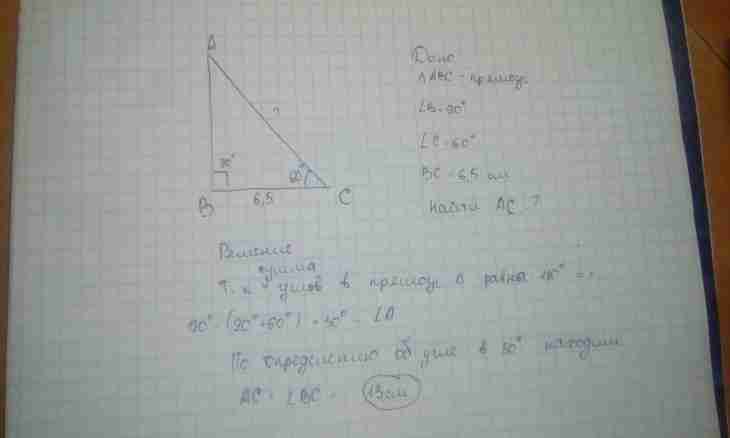Any flat corner can be completed to developed if to prolong one of its parties for top. At the same time other party will divide the developed corner into two. The corner formed by the second party and continuation of the first is called adjacent, and when it comes to polygons, it is called also external. The fact that the sum of external and internal corners by definition is equal to the size of the developed corner allows to calculate trigonometrical functions on the known ratios of parameters of polygons.
Instruction
1. Knowing result of calculation of a cosine of an internal corner (α) you will know the module of a cosine external (α ₀). The only operation which you need to make with this size - to change its sign, that is to increase by-1: cos (α ₀) = - 1*cos(α).
2. If the size of an internal corner (α), for calculation of a cosine external is known (α ₀) it is possible to use the method described in the previous step - to find its cosine, and then to change the sign. But it is possible to make and in a different way - at once to calculate a cosine of an external corner, having taken away for this purpose size internal from 180 °: cos (α ₀) = cos (180 °-α). If the size of an internal corner is specified in radians, the formula needs to be transformed to such look: cos (α ₀) = cos(π-α).
3. In a regular polygon for calculation of size of an external corner (α ₀) it is not necessary to know any parameters, except quantity of tops (n) of this figure. Divide into this number 360 ° and find a cosine of the received number: cos (α ₀) = cos (360 ° / n). For calculations in radians it is necessary to divide the doubled Pi's number into number of tops, and the formula has to take such form: cos (α ₀) = cos(2*π/n).
4. The cosine of an external corner at the top lying opposite to a hypotenuse is always equal in a rectangular triangle to zero. For two other tops this size can be calculated, knowing lengths of a hypotenuse (c) and a leg (a) which form this top. At the same time it is not required to calculate any trigonometrical functions, just divide length of the lower side into length of bigger and change the sign of result: cos (α ₀) = - a/c.
5. If lengths of two legs are known (an and b), it is possible to do in calculations without trigonometrical functions too, but the formula will be slightly more difficult. Fraction in which denominator there is length of the party adjoining top of an external corner and in numerator - length of other leg, defines a tangent of an internal corner. Knowing a tangent it is possible to calculate a cosine of an internal corner: √ (1/(1+a²/b²). Replace with this expression a cosine in the right part of a formula from the first step: cos (α ₀) =-1 * √ (1 / (1+a²/b²).

